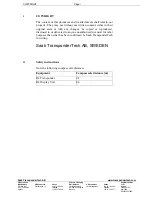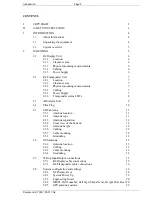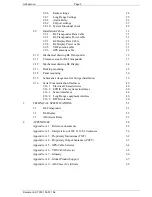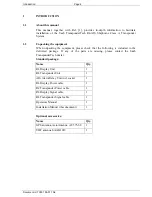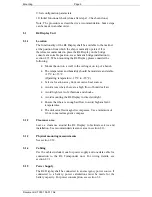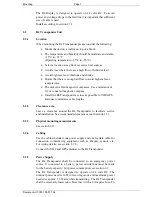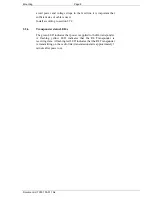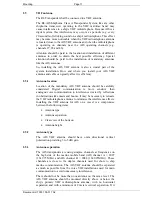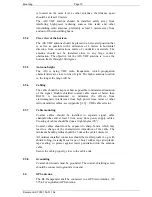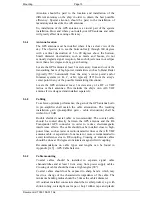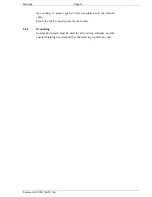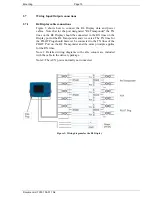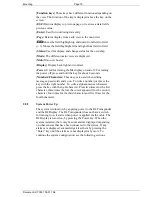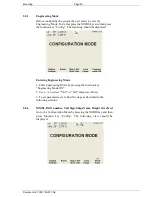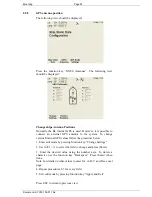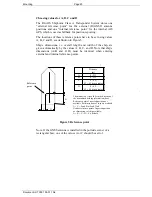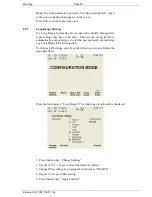
Mounting Page
13
Document id: 7000 108-011 A2
Attention should be paid to the location and installation of the
different antennas on the ship in order to obtain the best possible
efficiency. Special attention should be paid to the installation of
mandatory antennas like the AIS antennas.
So, installation of the GPS antenna is a crucial part of the system
installation. How and where you install your GPS antenna and cable
will greatly affect its sensing efficiency.
2.6.1 Antenna
location
The GPS antenna must be installed where it has a clear view of the
sky. The objective is to see the horizon freely through 360 degrees
with a vertical observation of 5 to 90 degrees above the horizon.
Small diameter obstructions, such as masts and booms, do not
seriously degrade signal reception, but such objects must not eclipse
more than a few degrees of any given bearing.
Locate the GPS antenna at least 3 meters away from and out of the
transmitting beam of high-power transmitters such as S-Band Radar
(typically
±
15° horizontally from the array’s center point) and/or
Inmarsat systems (A, B, C, or M; typically
±
10º from the array’s
center point in any of the possible transmitting directions).
Locate the GPS antenna at least 3 meters away of a HF or VHF
radios or their antennas. This includes the ship’s own AIS VHF
antenna if it is designed and installed separately.
2.6.2 Cabling
To achieve optimum performance, the gain of the GPS antenna built-
in pre-amplifier shall match the cable attenuation. The resulting
installation gain (pre-amplifier gain - cable attenuation) shall be
within 0 to 10 dB.
Double shielded coaxial cable is recommended. The coaxial cable
should be routed directly between the GPS antenna and the R4
Transponder GPS connector in order to reduce electromagnetic
interference effects. The cable should not be installed close to high-
power lines, such as radar or radio-transmitter lines or the AIS VHF
antenna cable. A separation of one meter or more is recommended to
avoid interference due to RF-coupling. Crossing of antenna cables
should be done at 90 degrees to minimise magnetic field coupling.
Recommendations on cable types and lengths can be found in
Appendix
[
A.5
]
– GPS Cable Selector.
2.6.3 Cable
mounting
Coaxial cables should be installed in separate signal cable
channels/tubes and at least 10 cm away from power supply cables.
Crossing of cables should be done at right angles (90°).
Coaxial cables should not be exposed to sharp bends, which may
lead to a change of the characteristic impedance of the cable. The
minimum bending radius should be 5 times the cable's diameter.
All outdoor installed connectors should be weatherproofed, e.g. with
shrink tubing, watertight seal tape or butyl rubber tape and plastic


